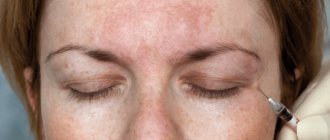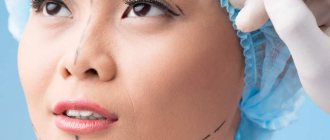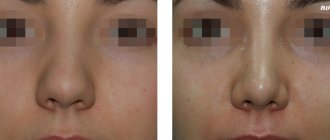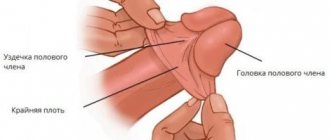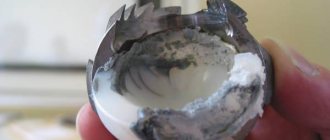Swelling after surgery is quite often a natural physiological reaction of the body to the intervention. As a rule, such a postoperative complication causes discomfort and additional problems. During the normal course of the recovery period, the swelling goes away on its own, but any person wants to get rid of this trouble as soon as possible. Pathogenic causes of the phenomenon are also possible, so the development of the process should be kept under control.
Causes of edema
Swelling can form both after surgery and with any damage to the integrity of body tissues. However, after surgery, the damage is usually quite severe, so the body's reaction is severe tissue swelling.
Edema is the accumulation of fluid in body tissues or between tissue spaces. After surgery, local edema is predominantly formed, caused by the influx of lymph to the destroyed tissues. The cause of postoperative edema is the active work of the immune system, the functioning of which is aimed at maintaining the normal state of the body after destruction of its integrity.
In some cases, the cause of swelling after surgery is inflammatory processes that progress in the human body. In such a situation, there is a rise in body temperature and the skin turns red. The severity of swelling after surgery may be insignificant, or, conversely, quite pronounced. This is determined by the following factors:
- duration of the operation and its complexity;
- individual characteristics of the body;
- state of the immune system;
- compliance with the rules of the rehabilitation period.
It is necessary to relieve swelling after surgery as soon as possible, and there are no preventive measures against such an unpleasant phenomenon. In order to speed up the patient’s recovery after surgery, it is necessary to follow all the doctor’s recommendations and refrain from self-medication.
Most often, swelling appears 2-3 days after surgery and begins to decrease over time. How long it takes for the swelling to subside after surgery depends both on the complexity of the surgical intervention and the individual characteristics of the body. If swelling persists for a long time, it is necessary to seek help from a qualified specialist who will identify the causes of this pathological condition and prescribe the necessary treatment.
Rehabilitation after plastic surgery
The comprehensive rehabilitation program after plastic surgery at the Doctor Plastic clinic includes various physical therapy techniques for faster and more comfortable recovery and consolidation of the results of facial and body plastic surgery.
The rehabilitation course is prescribed individually:
Thanks to comprehensive rehabilitation at the DoctorPlastic clinic, the following results are achieved:
- faster healing of sutures;
- accelerated restoration of skin sensitivity;
- minimizing discomfort, unpleasant sensations, pain, swelling;
- minimizing scars;
- shorter rehabilitation period and faster social adaptation and return to normal active life.
The effectiveness of the rehabilitation program of the Doctor Plastic clinic is such that it allows you to speed up recovery and reduce the recovery period after plastic surgery by 3-4 times or more.
For example, after rhinoplasty surgery, the recovery period is reduced from six months to two weeks, that is, by 12 times!
Treatment methods for edema of the lower extremities
In order to understand how to relieve swelling after surgery, it is necessary to identify the cause of this condition and rule out thrombosis. With this pathology, blood seals accumulate in the venous vessels and arteries, and in the absence of effective treatment, side effects may develop. To confirm thrombosis, ultrasound and, in particular, scanning are performed. After assessing the patient’s condition, if necessary, medications are prescribed that cause blood thinning and relieve swelling.
To eliminate swelling of the legs, the following procedures may be prescribed:
- Compression jersey. After the operation, it is recommended to wear special knitted tights or stockings, which will help relieve swelling.
- Lymphatic drainage. After surgery, a specialist performs a manual massage, which includes light stroking of the feet and lower extremities, as well as deep impact on the lymph nodes.
- Diet. During the postoperative period, many experts recommend following a special diet, which is based on reducing the amount of water and drinks in the diet. Following such a strict diet can reduce the risk of swelling of the legs and speed up the patient’s recovery.
- Taking medications. If there is increased swelling of the lower extremities and feet due to varicose veins, specialists may prescribe special diuretic drugs, which can help eliminate the resulting dysfunction. When patients ask how to relieve swelling after surgery, doctors most often prescribe Lasix and Furosemide, thanks to which the body manages to get rid of accumulated fluid.
It is important to remember that any measures to eliminate swelling of the legs should only be selected by a doctor. Any self-medication may not only fail to eliminate the pathology, but also further aggravate the patient’s condition.
What does your skin need after cosmetic surgery?
- Preparations and procedures that promote the synthesis of collagen and elastin. The most common among them are preparations containing L-ascorbic acid. Procedures include ultrasound therapy and infrared laser. (Lifting gel with elastin).
- Iontophoresis with biologically active drugs that are injected into the skin of the face, neck and décolleté.
- Procedures that stimulate microcirculation (microcurrents, ultrasound, etc.). Their consequence is an increase in oxygen content in tissues, activation of metabolism, stimulation of the synthesis of collagen and elastin.
- Lymphatic drainage: thanks to it, lymph outflow improves, bags under the eyes and swelling on the face disappear.
- Preparations that promote the healing of postoperative sutures (solcoseryl and the like).
- Moisturizing and stimulating masks. Post-operative skin responds especially well to algae-based masks and sublimated collagen masks. Gels with hyaluronic acid are ideal for hardware procedures.
- Acupressure skin massage. As a method, it is both delicate and effective at the same time.
How to relieve post-operative facial swelling?
You can get rid of facial swelling after surgery using some recommendations:
Limit the use of hot water. After the operation, you are not allowed to take a hot bath or shower, and you will also have to avoid washing your face with too warm water. A contrast shower is considered an effective remedy, thanks to which it is possible to free the tissues from the accumulation of fluid. After surgery, you are not allowed to be outdoors for a long time, as this may cause increased swelling.
- Using cold compresses. A few days after surgery, it is recommended to apply cold compresses to the face or certain areas of it for several hours. As an alternative, chilled cabbage leaves can be used to relieve swelling after surgery.
- Complete nutrition. In the postoperative period, it is necessary to exclude from the patient’s diet those foods that can provoke tissue swelling. It is not allowed to consume large amounts of liquid or eat salty foods at night. You will have to stop drinking alcoholic beverages, as they impair blood circulation and thereby cause increased swelling.
- Control of physical activity. After surgery, it is necessary to avoid any physical and emotional stress on the body. The fact is that any stress or severe fatigue can provoke a further increase in swelling.
- Rest and peace. After surgery, you need to take care of proper rest and complete peace. It is important to remember to keep your head slightly elevated while sleeping. In addition, you need to avoid facial tension and avoid training in the gym. Morning jogging and other types of physical activity will have to be postponed for some time.
If it is not possible to get rid of postoperative swelling of the soft tissues of the face, you should consult a specialist. It may be that to solve this problem, additional exercises or massages will be required to reduce swelling. To eliminate the pathology, a specialist may prescribe diuretics to remove fluid accumulated in the body. In advanced cases, hormonal drugs can be used, but under the supervision of a doctor.
What is prohibited in the first month after surgery and facial plastic surgery
- Solarium. UVR, being an additional load on the skin, spends energy resources on melanogenesis and thereby reduces immunity. After a UVB session, even normal skin is in a state of micro-edema. In addition, the risk of hyperpigmentation is high.
- Sauna and hot shower, which increase swelling by expanding the vascular bed.
- Invasive cosmetology methods that are accompanied by microtraumas (for example, mesotherapy)
- Methods that involve tissue displacement are manual massage, myostimulation, vibration massage and vacuum massage.
How to remove postoperative swelling with folk remedies?
You can get rid of tissue swelling after surgery using both conservative therapy and folk remedies. It must be remembered that resorting to such recipes is permitted after consultation with a specialist.
You can relieve swelling of the lower extremities using the following means:
- use infusions of chamomile or St. John's wort;
- rub the inflamed areas of the skin with valerian tincture;
- rub olive oil into swollen tissues;
- apply vinegar compresses.
You can quickly get rid of post-operative facial swelling at home using proven methods:
- wipe the entire face or individual areas with a piece of ice, which is prepared from tea or chamomile infusion;
- make a face mask by brewing a few tablespoons of green tea and wipe the inflamed tissue with the resulting solution;
- Cucumber or raw potatoes help relieve postoperative swelling.
Swelling after surgery does not pose a serious threat to human health and life. However, it is necessary to quickly get rid of this problem, which will prevent the development of dangerous complications in the future. Before removing swelling after surgery, you should consult a specialist.
Rehabilitation program after contouring
Without an individual approach to the selection of rehabilitation procedures after facial contouring surgery, the period of complete recovery may take 6 months or more. In addition to standard treatment of surgical sutures and scars beginning to form, dietary and lifestyle restrictions, doctors can make the following prescriptions:
- facial laser therapy – active production of collagen and elastin by skin cells begins, which leads to rapid scarring and resorption of rough sutures;
- Ultrasound therapy – has an anti-inflammatory and analgesic effect, makes metabolism faster and more complete;
Ultrasound therapy
It is important to use professional facial skin care cosmetics during the rehabilitation period. It is selected by a doctor and can be used only after the scars have healed and swelling and bruising have disappeared. Cosmetics for restoring skin health after facial contouring contain antioxidants, vitamins, and minerals, which together give an extremely positive result.
All rehabilitation measures begin no earlier than 4 days after surgery. It is important that by this point the patient does not complain of pain.
Rehabilitation after facial contouring and other interventions is a program aimed at rapid recovery of the patient and prevention of complications. Thanks to an individual approach to the selection of specific procedures and a complex effect on the facial skin, it is possible to quickly get rid of bruises, swelling, rough scars and scars.

